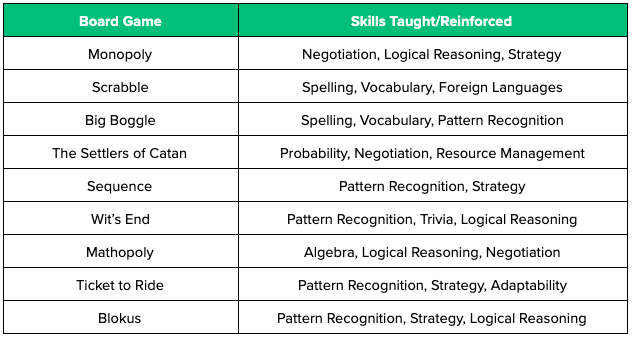With many school districts closed for several weeks minimum to prevent the spread of COVID-19, educational reliance upon technology is at an all-time high. Distance learning has become the keystone to keeping kids engaged until the virus subsides. However, distance learning means an unavoidable increase in screen time.
For anyone trying to overcome the obstacles of parenting during coronavirus, the prolonged screen time may seem like an easy solution to keep kids busy. The lack of opportunities to see friends in-person is definitely frustrating. Especially for parents now working remotely at home, any distraction is welcomed while on an important conference call.
While leveraging technology during this time is crucial, we want to share some ideas to keep your children learning at home without the need of a computer, TV or tablet. There are plenty of screen-free activities to give both yourself and your children a break. Just think back to when you were a kid. What books did you read? What games did you play? Take this extra time with your kids to teach them about your childhood!
Distance learning without computers is completely doable and more fun than your children think. Try out these five at-home activities for kids:

- GOOD OLD-FASHIONED READING
When was the last time your child read a book for fun outside of school? Truth be told, it’s probably been a while. With hours of homework and extracurricular activities every day, it can be almost impossible to find free time, let alone dedicate it to reading for leisure. Kids are often forced to read books in English classes that don’t interest them. As a result, they don’t associate pleasure with literature.
The extra free time from distance learning provides parents the opportunity to change that association. Share your favorite childhood books with your kids. Revisit the old bookshelves full of stories waiting to be reread. There are plenty of reading lists online for every grade level and genre to look through if your child needs a recommendation. Here are a few to get you started:
- Middle School Mystery
- Middle School Fantasy
- Middle School Science Fiction
- High School Horror
- High School Historical Fiction
- EDUCATIONAL BOARD GAMES
Board games have been a traditional pastime of kids and adults for decades. In the past five years, board games have seen a resurgence in popularity as millenials push for the creation of new games and eateries focused on playing board games. While education-driven apps are useful for keeping your children entertained and learning, they also increase screen time and isolation.
Playing board games, on the other hand, promotes teamwork, family bonding, problem-solving, and specific skill sets depending on the goal of the game. They also teach your children how to lose, how to juggle multiple tasks at once, and how to follow directions. Just like sharing your favorite books, you can teach your kids how to play your favorite childhood board games.

Check out these board games to break up hours of distance learning:
- FUN WRITING SESSIONS
Getting your kids to practice writing outside of school can be like pulling teeth. Just as they connect reading with boredom, students associate writing with criticism. They write essays, lab reports, and research papers, but rarely can they practice creativity in these assignments. Unless they take a traditional creative writing class, your kids probably haven’t written creatively in a long time.
Take this opportunity to schedule regular, short writing sessions. Keeping your kids writing at home ensures they don’t regress in self-expression, communication, and grammar. You can use creative prompts to increase their interest and confidence in writing. They will quickly see the difference between academic writing and creative writing but won’t realize they are practicing valuable skills.
- PUZZLES OF ALL KIND
When you think of puzzles, frustration is probably what you feel. Doing a thousand-piece jigsaw puzzle is no easy feat. However, there are so many other types of puzzles—crossword, logic, trivia, pattern, math. They test skills from problem-solving to visual-spatial reasoning. Your children do a variation of puzzles in school everyday usually in math and science classes. But you can make it a lot more fun than solving algebra problems!
Open the old games cabinet and take out the puzzles that haven’t been touched in years. If they’re particularly easy and your kids are older, turn it into a race. Set a timer and see who can finish the puzzle the fastest. You can also go online and print crossword and sudoku puzzles for logophiles and math whizzes.

- THE GREAT OUTDOORS
If your family is practicing social distancing, your kids have probably complained about missing their friends and feeling cooped up. As long as you’re taking appropriate precautions, there’s no reason why they shouldn’t spend some time outside. Kids are used to running around at recess or practicing sports for a few hours every day.
It’s important they continue getting exercise and fresh air for not only their happiness but also your sanity!
Take this outdoor time and turn it into a unique educational opportunity. Encourage kids to leave their phones and tablets inside and enjoy the spring weather. Try checking off all the learning activities on the list below:
- Go for a hike at a nearby state or national park
- Identify native plants to the area
- Look for animals coming out of hibernation
- Explore aquatic environments
- Take a bike ride through the neighborhood
- Talk about bike safety beforehand
- Identify the parts of the bike
- Learn proper signals for stopping and turning
- Plant a garden in your backyard
- Discuss sustainable practices
- Learn what vegetables/flowers grow best in your climate
- Teach cultivation skills and responsibility
 Help
Help